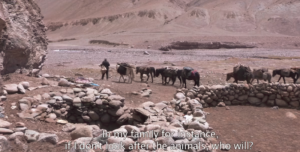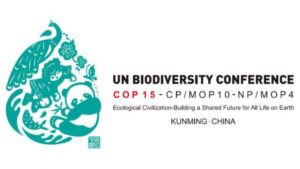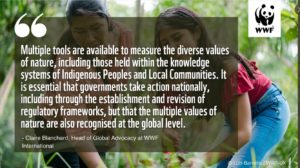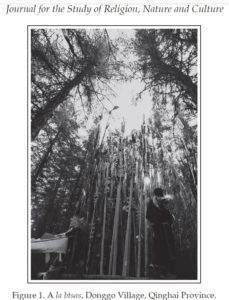Blog 2 of 2 on Tibet and the global biodiversity crisis
WHIPPING
To keep pace with China’s proliferating agendas, ongoing removal of nomads from their pastures is now mandated not only by national park zoning regulations, but also in the name of poverty alleviation. Several policy decrees issued by party-state central repeat the command to persist with nomad exclosures, colourfully called in Chinese “putting down the whip”, 放下牧鞭的管 fàngxià mù biān de guǎn. In reality Tibetans do not whip their animals. Tibetans know their animals individually. They whistle to them to guide them, and vocalise. Occasionally a slingshot stone pings an errant yak to get it back on track.
These unconscious biases embedded in China’s metaphors are revealing. The latest rationale for removing nomads is altitude. https://english.news.cn/20220719/9b5ca266138748708993106af7bdeef8/c.html The most recent mass mobilisation campaign in Tibet Autonomous region designates everyone utilising pastures at 4800m or higher as desperately poor, living wretched lives, now being relocated to lower altitudes in order to populate the transHimalayan prefectures of southern Tibet, along the India border, with a newly sedentarised, villagized, securitised population. In official media announcing these benevolent relocations, no mention is made that this is for many a second relocation, as they were sent 50 mor 60 years ago up into the Chang tang alpine desert to “reclaim waste land”, and there they stayed, by command, until now.
China’s rhetorics of biodiversity are now entangled with discourses of development, modernity, urbanisation, securitisation, tourism, resource extraction, climate change, meat production and more.
A PLANET TO SAVE
At COP 15 of the Convention on Biodiversity, with China chairing, none of these entanglements and contradictions will manifest, if China has its way. COP 15 in Montreal December 5 through 17, 2022, is a major opportunity to save Tibet, save nature worldwide, save the planet, just as much as the climate COP in Glasgow was. The intention is to agree on final text of Global Biodiversity Framework to safeguard nature. This Global Biodiversity Framework (GBF) has been a long time coming, since it quickly became clear the previous such framework, agreed by all in 2010, failed badly and nature is shrinking, many more species are now extinct, and a much more ambitious GBF is needed.
Because the pandemic delayed this crucial biodiversity COP again and again, all the momentum built up by advocates for nature has dissipated, but the planet, and all that lives, now needs to commit to bold and effective action.
In the climate debate, Tibetans worked hard to establish the basic truth that Tibet matters. In the biodiversity debate, Tibet not only matters, it is in every sense the heart of Eurasia. It is the great island in the sky of the planet’s biggest continent, and it has mattered again and again, over many millions of years, as a refuge for the wildlife we know around the world. Tibet does matter.
KUNMING/GENEVA/ NAIROBI/MONTREAL/ DESTINATION UNKNOWN
Yet it seems likely the Montreal COP will fail, even while China boasts of its achievements by locking away so much of the Tibetan Plateau, an assertion seldom challenged. Hardly ever does anyone any longer name the actual heart of biodiversity, in Kham.
But these are only some of the reasons the Montreal biodiversity COP is likely to fail. Where is the build-up of scientific reports reminding us how urgent is the work of saving nature from human predation? They came and went when it seemed this COP was imminent, only to fade again. Now we are in a world preoccupied with blame, identity, taking sides, short term dangers, not so much room for the bigger picture.
Worse, the preliminary lead up negotiations for this COP dribbled into incoherence and recriminations. Far from moving closer to finalised text of a newly updated CBD treaty, the delegations from each government spent most of the time demanding payment from the richer countries, while the rich looked away, and China presided, saying little as it insists it is both developed and developing. In Geneva in March 2022 and in Nairobi in June 2022 all nations met, to thrash out the actual promised Global Framework Agreement.
The least developed countries often have the most intact undeveloped ecosystems and are under pressure to save the world from the urbanised rich world, that now includes China. The least developed in turn call for the rich to commit to $100 billion a year in new funding from the rich, from now to 2030, at a time all rich countries are arguing their economies are struggling in the aftermath of pandemic and massive pandemic support spending. It ain’t gonna happen.
China’s model for getting paid to protect Tibetan landscapes for nature is a capitalist market-based mechanism called Payment for Environmental Services. Polluting corporations would pay China for protecting Tibet, thus offsetting their own emissions and environmental impacts.[1] The payment would go to China’s biodiversity bureaucracies, not to Tibetan households.
China has told the rich-list World Economic Forum that investing in China’s “transition to a nature-positive economy” is an opportunity valued in the trillions.
WHO PAYS TO SAVE NATURE?
The poorer countries have embraced China’s key slogan of “common but differentiated responsibilities” to argue they must be paid to save the planet. China is paying the airfares of the many delegates from the many small island states and least developed countries, to attend Montreal.
As the Nairobi talks fizzled, environmental groups including Greenpeace, Avaaz, the Campaign for Nature and the International Indigenous Forum on Biodiversity published an open letter saying progress on the final deal was not being made, and the talks lacked high-level political engagement.
WWF director-general Marco Lambertini described the finale as “groundhog day in Nairobi”, adding that negotiators will need “a step-change in political will, attention and ambition” to salvage “text so divided that it will have no chance to be translated into an agreement at the 11th hour in Montreal”.
The close observers at Carbon Brief said “target-setting for issues from protected areas to pesticides saw more divergence than convergence. Many of the most hotly debated targets are strongly related to climate change, food security and a “nature-positive” economy: keeping carbon-rich ecosystems intact, subsidies for fossil fuels, agriculture and fishing, genetic resources that concern climate-resilient crops and sustainable consumption.”

CAN WE RESPECT NATURE AND RESPECT TRADITIONAL CUSTODIANS TOO?
Indigenous groups, however, were still deeply concerned about area-based targets in the framework and feared that their Free Prior Informed Consent (FPIC) would be relegated to guidance text, instead of in the GBF’s targets. The International Indigenous Forum on Biodiversity (IIFB) were the first at the talks to condemn forced evictions of the Maasai in neighbouring Tanzania, which they called an “example of gross violations of Indigenous Peoples rights in pursuit of profits and in the name of conservation [which] is at the core of ongoing GBF negotiations”.
Jing Corpuz, a Kankana-ey Igorot from the Philippines, told Carbon Brief that Indigenous groups were asking for indicators of good biodiversity health to include indicators on land tenure, effective participation and indigenous languages. She said: “40% of protected areas are in Indigenous areas. There’s nothing in the text on defenders. It’s not just the killings but also the criminalisation. What we’re proposing is access to justice and human rights defenders. We want it in the target, because it’s stronger.”
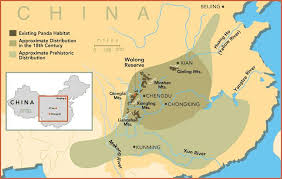
The UN Convention on Biodiversity is one of few global treaties that explicitly recognises indigenous and local communities as the best of all protectors of biodiversity, based on their actual record. Article 8j of the CBD is a way local protectors, such as Tibetan nomads, can assert their rights. “Globally, 1.87 billion Indigenous people and members of local communities (IPLCs) reside in key biodiversity hotspots, spanning 47% of the world’s surface, with 363 million living in existing protected areas. Yet legal recognition of IPLCs ownership is limited to just around 10% of these areas. IPLCs have demonstrated maintaining forests, ecosystems, and biodiversity effectively through collective ownership, governance mechanisms, and traditional ecological knowledge. The Food and Agricultural Organisation (FAO) shows that IPLC-led territories with formally recognised collective land rights have substantially better conservation outcomes than adjacent private or state-managed protected areas, such as stopping deforestation, even under growing violent harassment.”[2]
The routinely harassed and displaced Tibetan pastoralists could gain much if the Convention on Biodiversity succeeds.
The Women’s Caucus at the CBD – a network that advocates for more gender equity and inclusive processes in biodiversity – were not content with gender being relegated only to an action plan, brackets or footnotes. With other feminist groups, they pushed for the GBF to include a specific target on gender. “Why is it that we are still at a standstill where we need to justify a stand-alone target on gender equality?” asked Mrinalini Rai, director of the Women4Biodiversity network.
SUBSIDISING DESTRUCTION OF NATURE
Another unresolved issue in Montreal will be all those subsidies governments pay that destroy nature, from subsidising diesel and other fuels, subsidising the chemical fertilisers farmers apply to their monoculture fields, and the subsidies governments pay to fishermen to roam the world’s oceans scooping up all life from the seafloor. The total of nature-harming subsidies adds up to $500 billion a year, an enormous amount. Again the richer countries don’t want to know, even though the calculation was made by OECD.
In the CBD Nairobi talks China, in the chair, didn’t have to pitch its case, because others do it for them. It may be the same in Montreal, the hastily agreed venue once China suddenly decided to pull out of hosting, after two years of insisting Kunming is the venue, leaving the Montreal based CBD secretariat scrambling to take on the host city role while China grapples Covid over and over.
Again, China benefits enormously from positioning itself as both a developing and a developed country. China doesn’t need to lead the argument for “common but differentiated responsibilities”, since it has already won. Now the emerging countries deploy China’s favourite slogan to argue for more payment. Now the richer countries argue that reducing subsidies is not the business of the CBD, which suits China just fine, as it heavily subsidises its global fishing fleet that plunders the oceans, subsidises many manufacturing industries, including the mandatory price control limiting the price of electricity generated by all those hydro dams in Tibet.
HAVING IT ALL: WEALTH, URBANISATION PLUS WILDLIFE CONSERVATION
China does talk the talk. “Ma Keping, secretary-general of the biodiversity committee of the Chinese Academy of Sciences, said that what makes the draft post-2020 global biodiversity framework different from previous ones is that it places more emphasis on ecosystem restoration and sustainable production and consumption, while maintaining the traditional stress on protection. The draft aims to ensure all areas under agriculture, aquaculture and forestry are managed sustainably by 2030, in particular through the conservation and sustainable use of biodiversity, increasing the productivity and resilience of such production systems. Ma, one of the scientists who has spearheaded biodiversity research in China, said that only by making production and consumption sustainable can the world reduce the threat to biodiversity, bring resources under effective protection and restore them. “Simply setting up protected lands doesn’t work. We must motivate even larger participation and throw all walks of life into action,” he said.”

LET’S SAVE NATURE, BUT JUST NOT YET
The latest obstacle to the Montreal biodiversity COP from achieving much is, inevitably, Russia’s invasion of Ukraine. Biodiversity is threatened by chemical fertilisers that run off from farmland, over-fertilising rivers and reefs, a major cause of biodiversity loss. Likewise pesticides kill not only crop pests but other wildlife. So this CBD COP was meant to curb both pesticides and fertiliser production and use. In a world now facing food shortages, due to the invasion of Ukraine, that too is out the window. It’s not looking good.
The Montreal Biodiversity COP comes only two weeks after the next climate COP concludes. Will the world have the energy to speak up and keep speaking up?
In June 2020 the Campaign for Nature said “we must sound the alarm that this process has reached a crisis point. Progress is not being made. Negotiations have become stagnant, and the Post-2020 Global Biodiversity Framework is in peril. Countries had once pointed to COP15 as an opportunity to deliver a global deal for nature and people similar in significance to the Paris Climate Agreement, but there is a notable absence of the high-level political engagement, will and leadership to drive through compromise and to guide and inspire the commitments that are required.”
So we need good people to speak up, to move hearts, shift the dial, remind folks what really matters in a human-dominated world. Tibetans are good at taking a broad perspective, thinking ahead, considering consequences. Tibet is the heart of Eurasian biodiversity. Tibetans can take a lead in helping the Montreal COP fulfil its promise to all that lives.
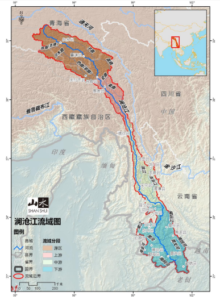
LET’S SAVE NATURE: NOW
The global climate crisis and biodiversity crisis are the same crisis of global over-reach, conquest of nature, shoving nature aside. If we are serious about nature-based solutions, we need much more than China’s ongoing, intensifying drive to urbanise, to consume ever more coal, to make more cement, copper, coal and steel than the rest of the world put together, while setting aside huge Tibetan landscapes as offsets that allow the onrush of concrete and steel city towers to continue uninterrupted.
We need a global change of mind. Tibetans know how to do meta-awareness, mindful awareness of awareness, of the infinitely creative capacities of mind freed from the compulsions of habit. Tibetans know how to respect fellow sentient beings, whether snow leopards, yaks, rodent pikas they are ordered to poison, sheep, goats, even wolves all have their place. Nomads know that if your herd grazes near a wolf mother’s den they are safe, because wolves on the hunt roam far. That is just one example of local knowledge of biodiversity, these days called a nature-based solution, that everyone is looking for.
The Covid-driven switch from Kunming to Montreal is a blessing, especially for Tibetans who could not possibly express their love of life and fear of biodiversity loss on the streets and halls of Kunming. This is an opportunity to ensure the voice of voiceless species worldwide is heard.

CHINA’S MASTERY OF NATURE, OR TIBETAN EXPLORATIONS OF THE NATURE OF MIND?
Tibetans know if you open your eyes, dissolve the mental clutter of expectations, the environment reveals itself as doable, liveable, without need of mastery and conquest. Tibetans know how to relax, not force the world to conform to my desires, at great cost to biodiversity.
In the heart of Sanjiangyuan, Tibetans show the world how to live with nature, in nature, with snow leopards prowling and international tourists staying in Tibetan homes, learning to see biodiverse landscapes through Tibetan eyes. This nature-based  enterprise in the Wangsai valley of Zato dzong, in the Yushu hinterland, near the source of the Mekong, has the full support of the central party-state, and is featured in official media. That’s Tibetan skilfulness for you, bringing together not only humans and nature, but also weaving in Beijing’s “ecological civilisation construction” and the global yearning to be at one with the world in all its biodiverse beauty, helped by your Tibetan hosts. https://snowleopardangsai.wordpress.com/about-angsai-2/
enterprise in the Wangsai valley of Zato dzong, in the Yushu hinterland, near the source of the Mekong, has the full support of the central party-state, and is featured in official media. That’s Tibetan skilfulness for you, bringing together not only humans and nature, but also weaving in Beijing’s “ecological civilisation construction” and the global yearning to be at one with the world in all its biodiverse beauty, helped by your Tibetan hosts. https://snowleopardangsai.wordpress.com/about-angsai-2/

If the Montreal COP15 of the UN Convention on Biodiversity is to achieve what the living world needs, it needs to learn from Wangsai. Who will show them the way?
[1] Haigen Xu, Yun Cao, Dandan Yu, Mingchang Cao, Yuxiao He, Ensuring effective implementation of the post-2020 global biodiversity targets, Nature Ecology & Evolution 2021
[2] Jean Carlo Rodríguez de Francisco, Decolonising conservation: Why the New Global Biodiversity Targets Should Embrace Rights-Based Conservation, German Development Institute, Oct 2021
